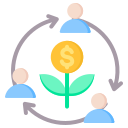Why Participation Changes Cities
Traditional consultation often asks for opinions after decisions are drafted. Co-creation invites residents to define problems, set priorities, and test solutions early, ensuring results reflect lived experiences rather than assumptions.
Why Participation Changes Cities
A retired bus driver once mapped dangerous dusk stops on a community walk. His notes guided lighting upgrades and route changes, cutting wait-time anxiety dramatically. Real stories translate effortlessly into practical, targeted improvements.








